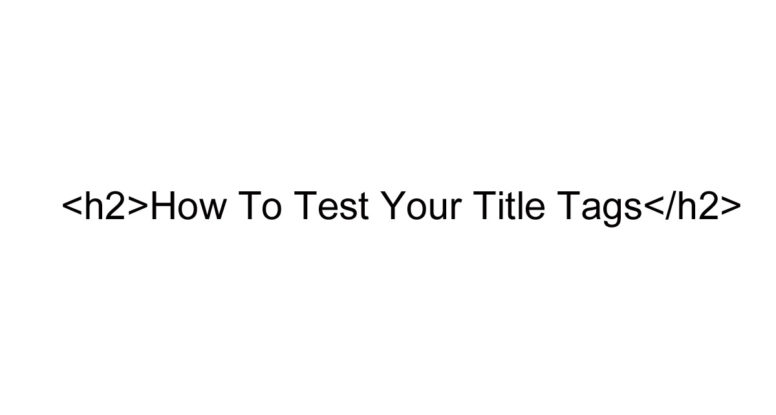
How SERP Testing Can Improve Your Website Traffic
Do you want to increase traffic to your business website, boost click-through rate (CTR), and increase impressions and conversions? (Ok, those are rhetorical questions.) Assuming you do, then you may want to consider experimenting with your title tags.
If you consistently rank #1 on Google, trying different title tags may not help you much. But for the rest of us, testing various title tag options can deliver incremental improvements that add real business value. This is especially true if you’re in an aggressive space with a lot of competition, and where an increase of a percentage point or two in traffic may give you a measurable revenue increase.
How to Test Your Title Tags
Testing your title tags starts with a hypothesis. Since Google crawls the Web to add information to its search results, what you include in your tags should increase or decrease clicks based on the usefulness of your information. So you’ll need to decide what type of information you’d expect would boost engagement, attract eyeballs, and deliver clicks.
Once you have a word or phrase you expect would work, we suggest changing the title tags for about 10% of your pages at first to test your theory. You don’t want to apply changes to all pages and then find out it’s not working. You’ll then compare these new tags against a control page or pages with similar impressions and traffic levels.
Be aware that it could take a couple of weeks before you see any results since Google needs time to register the changes. (Though sites with high traffic may need just a few days for Google to notice.) You then carefully monitor the traffic to your test pages and measure total impressions, CTR, bounce rate, conversions, and other metrics.
If you see an increase in traffic to the pages with the new title tags compared with the control, you can then roll out the changes to a higher percentage of your pages. Whether that percentage is 30, 50, or higher will depend on multiple factors including whether this is a busier time of year for your business, the type of business you have, and even your tolerance level for stress since it’s possible that testing could temporarily reduce your traffic.
Testing in Action: A Case Study
Using a case study as an example, here’s an outline of an effective way to test, and hopefully improve, the performance of your title tags.
Verenorth has a client in the healthcare industry that delivers timely medical training materials. Since these materials change each year, we know people search for the latest version because it’s most relevant to them. So our theory was that adding the year 2020 to title tags would boost CTR to the site (our tests were done in 2019 for the 2020 versions of the testing material).
We then took it a step further and tested the visual appearance of the information. We changed some tags to have 2020 in brackets while others used bullet points and then compared the two. We wanted to learn whether adding the year improved CTR, and if so, which format worked best.
After measuring traffic, total impressions, CTR, bounce rate, and several other indicators on the test pages, we learned that the year in the title tag did in fact improve CTR and that the brackets format performed best. Based on this information, we then rolled out the changes to about 40% of the website and tested again before eventually rolling out to the majority of the pages on the site.
Again, we don’t recommend testing at the beginning of your busiest time, especially in your business is seasonal. Instead, try a slower time so you don’t risk as much. You don’t want to potentially decrease traffic during your peak time. But by starting with a sound hypothesis and testing it gradually, you may find the business boost you’re looking for.
If you have questions about testing title tags, get in touch with us to discuss this and other ways to increase traffic to your website.
